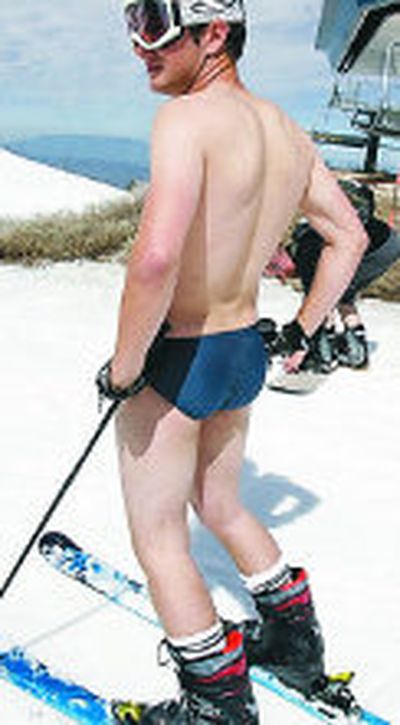Future skiing difficult to predict

Predicting the future is a risky business.
John Fry knows.
He was editor-in-chief of SKI magazine in 1968 when the staff set out to describe skiing in 2001.
According to the magazine, skiers in the new millennium would “wear skintight suits in fair weather and in cold weather insulated space suits like the ones worn by the astronauts on the moon,” Fry recalls. Not even close.
Other predictions?
The same pair of skis would perform well on ice and in deep powder. Not quite.
Open chairlifts would become obsolete, replaced by enclosed lifts. Not yet.
But the forecasters at SKI got other things right, predicting such technological breakthroughs as hard synthetic outer boots with inner liners that conform to individual feet; travel changes such as cheaper air fares; and development trends such as the plethora of second homes at the base of ski areas.
Still, Fry, whose credentials include lifetime achievement awards from the International Skiing History Association and North American Snowsports Journalists Association, and who helped launched the NASTAR program and the Graduated Length Method of teaching, is reluctant to venture further guesses at the future.
In his new book, “The History of Modern Skiing” (University Press of New England), Fry addresses the past: “Americans produced many of the innovations that transformed the sport — including the chairlift, the metal ski, the plastic boot, the modern ski pole, snowmaking and grooming, professional head-to-head racing, the waxless cross-country ski, the freestyle movement, and snowboarding.”
He offers only one look ahead: “There are strong indications that some skiers who took up snowboarding will be going back to wide, short skis that can carve a turn. That was the big attraction of snowboarding in the 1990s — you could arc a pure curve turn on the snow. Now, you can do that with skis.”
Imagine a skier from 50 years ago surveying the scene in a modern lift line. What would he think of iPods wired into jackets? GPS wrist units? Cell phones with cameras? Digitally scanned lift tickets? Polarized contact lenses designed to cut snow glare? PDAs that allow skiers to check in at the office while they’re on the lift? These innovations have shaped the sport and will continue to do so, believes Jim Carroll.
Carroll, a noted futurist who lives outside Toronto, says the concept of a work/life balance is a major trend that will continue.
He shares this story: “An engineering company was trying to hire this engineering student in British Columbia, near a bunch of (ski) resorts.
He turned their offer down. They called him back and were mystified. He said, “You talk about your 9 to 5 culture; that would mess with my powder time.”
The way younger people define themselves has changed, Carroll says. “They don’t tell you what they do for a living, but what they do.”
Carroll sees a ski area in the future “with a lot more people hanging out at the hill with a little portable office, doing their thing.”
What will allow that to happen? “Technology,” Carroll says. “The revolution with technology will exceed the revolution that parabolic skis created.”
But the revolution won’t change the essence of the sport.
“The basics won’t change — it’s about snow and sliding downhill,” says Michael Berry, president of the National Ski Areas Association, a trade organization for ski area owners and operators.
Berry believes the mechanics of running a ski area will continue to evolve. “I think some of the things that are irksome to people will be eliminated.
“We’ll continue to find ways to improve the surface, and make uphill transportation more efficient.”
Berry envisions a whole lot of ways to get down the mountain as well.
“There will probably be many different devices along with skis and snowboards, whether it’s Ski Bobs (snowbikes) or elaborate toboggans or a luge.”
The innovation of snow sports equipment parallels another trend — people will live longer.
“A longer life expectancy is a reality, at least for a chunk of the population,” Carroll says. “In North America, there will be more older skiers.”
Berry says the overarching theme of skiing will endure.
“Skiing is a wonderful time well spent with friends and family. That won’t go away.”